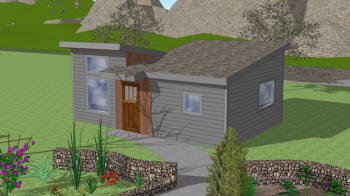 |
|
ADU
Plans |
ADU
Guidelines |
ADU Ideas
|
ADU Info |
|
|
|
|
An accessory dwelling unit, usually just called
an ADU, is a secondary housing unit on a
single-family residential lot. The term
“accessory dwelling unit” is a
institutional-sounding name, but it’s the most
commonly-used term across the country to
describe this type of housing.
The fact that it’s a secondary housing
unit—rather than a given structural form—is what
defines an ADU. When we are learning about
concepts, it’s natural to want to know what that
concept looks like in the flesh. We want to
visually embed the design concept in our brains
as a tangible object that we can mentally
reference. However, ADUs vary in their physical
form quite a bit, not only on form and function,
but what is allowed in each city.
Below are some links to local cities regulations
for the planning of
ADU's. Oregon law now requires all cities
to allow ADU construction within urban growth
boundaries. |
While their structural forms vary, ADUs share
some common traits and face common design and
development challenges. For one thing, the fact
that they’re secondary housing units on single
family residentially zoned lots places ADUs into
a unique category of housing. ADUs also have
some other distinguishing characteristics that
help further define, differentiate, and
distinguish them from other housing types.
|
 |
-
ADUs are accessory and adjacent to a primary
housing unit.
-
ADUs are significantly smaller than the
average US house.
-
ADUs tend to be one of two units owned by
one owner on a single family residential
lot.
-
ADUs typically are developed
after the primary house by
homeowner developers.
-
A large range of municipal land use and
zoning regulations differentiate ADU types
and styles, and dramatically affect their
allowed uses.
|
|
|
City of Portland Info:
https://www.portlandoregon.gov/bds/36676
City of Salem Info:
https://www.cityofsalem.net/Pages/accessory-dwelling-unit-rules.aspx |
|
|
|

